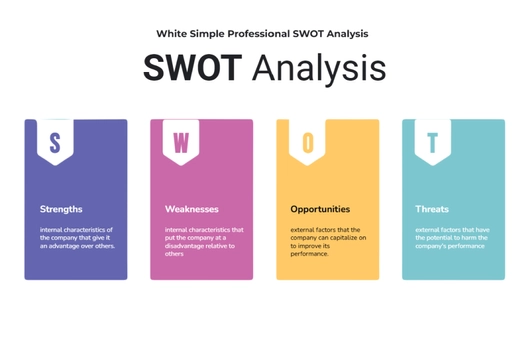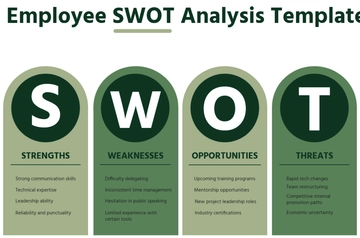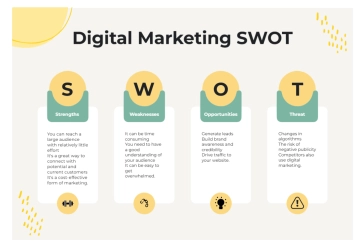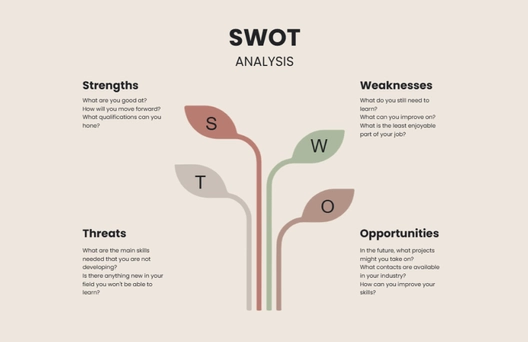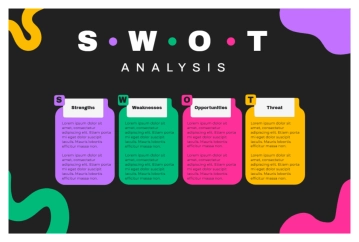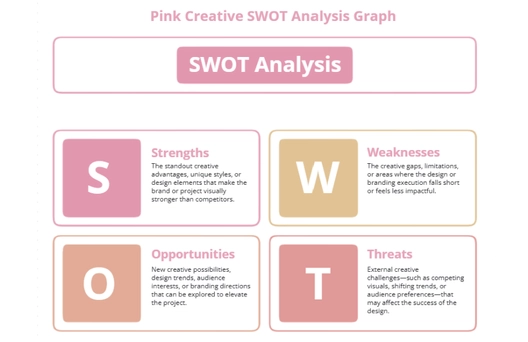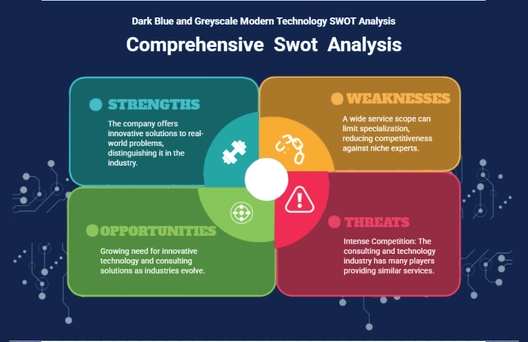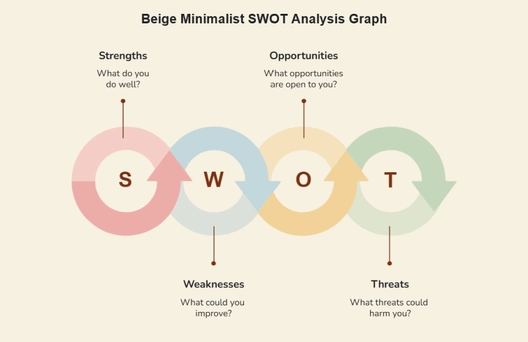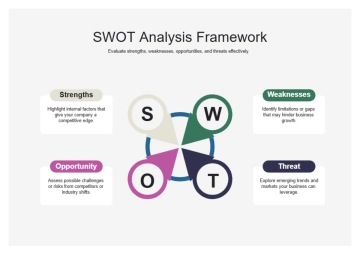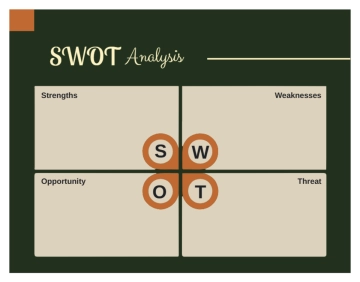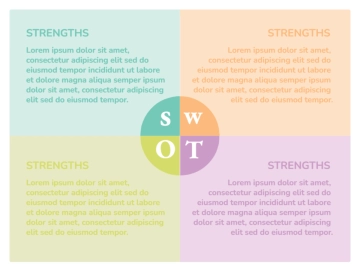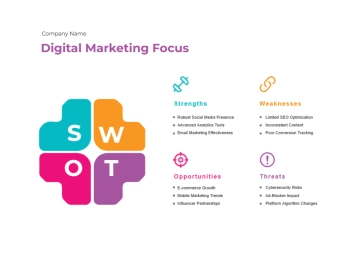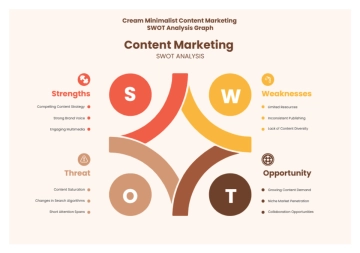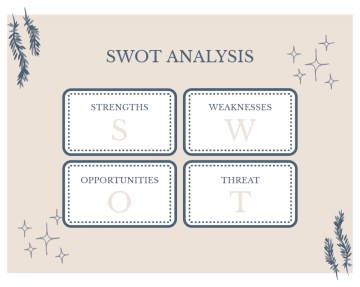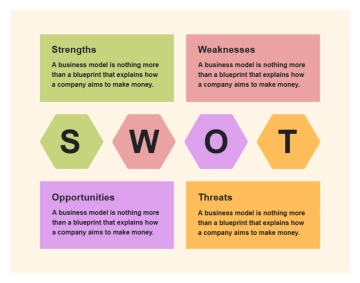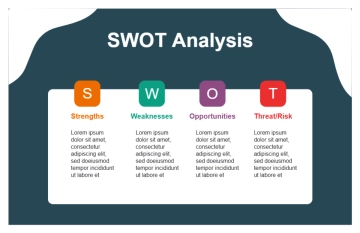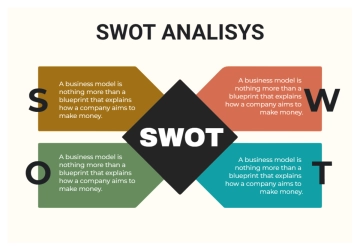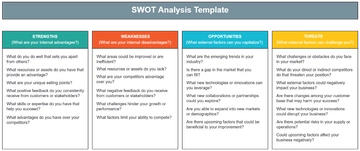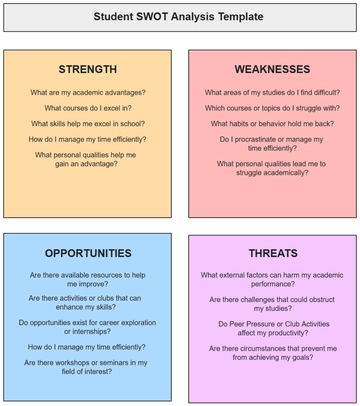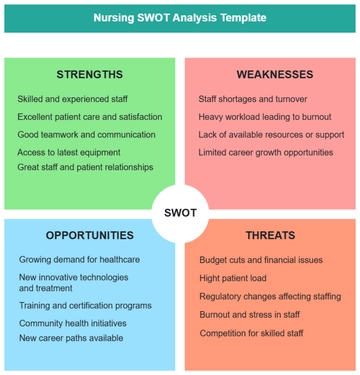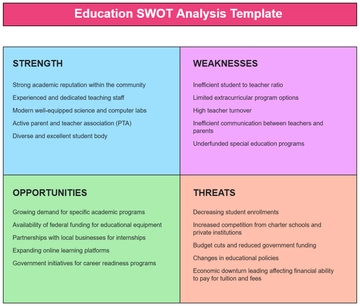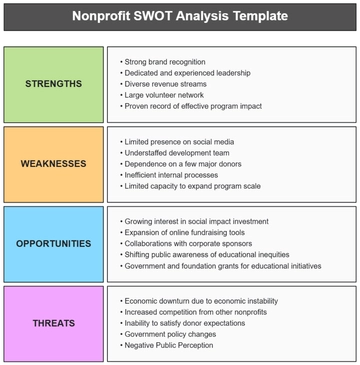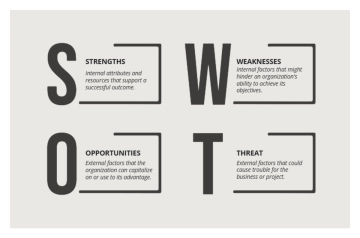Free Agriculture Marketing SWOT Analysis
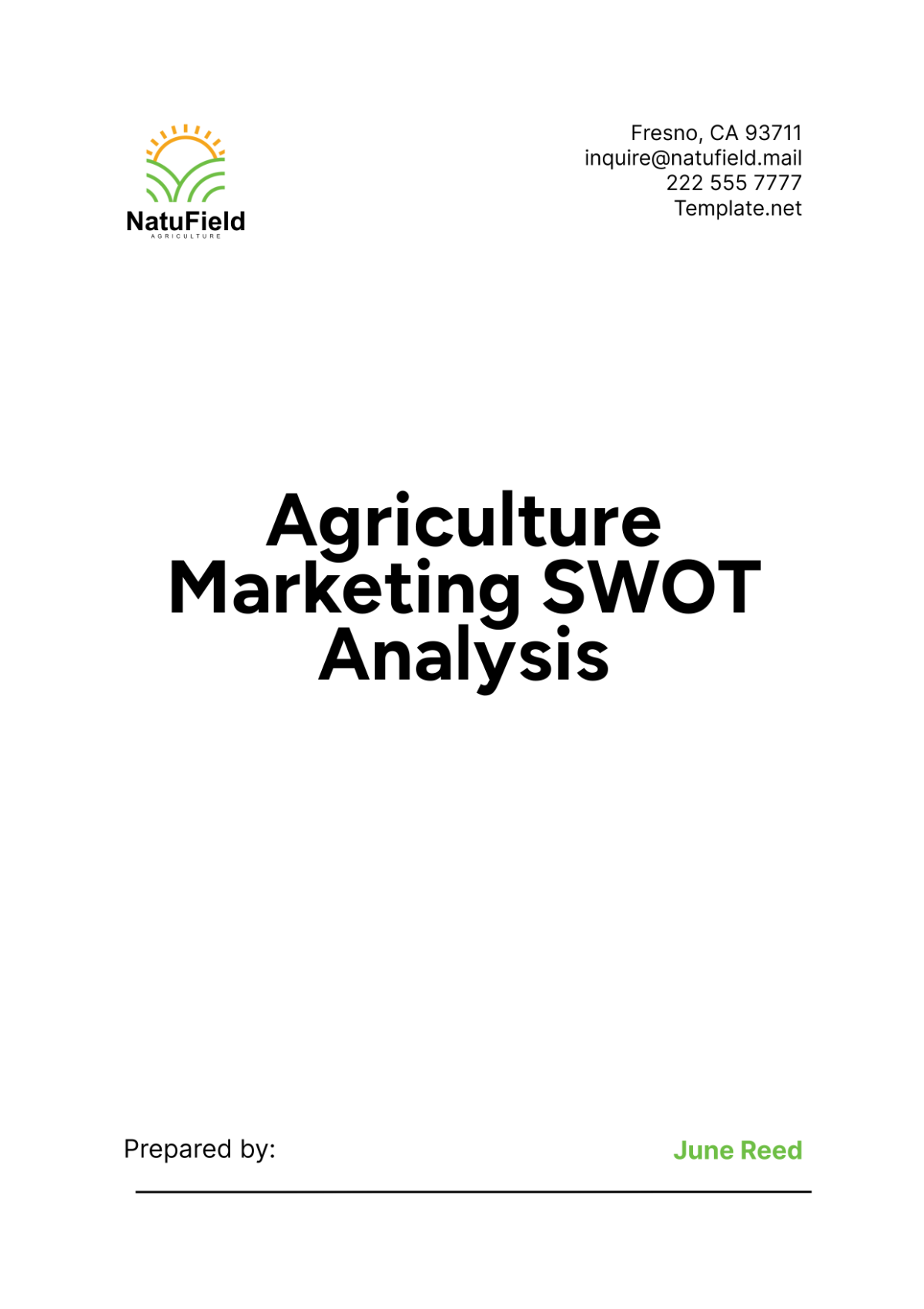
I. Introduction
Agriculture marketing plays a pivotal role in ensuring the efficient distribution and profitability of agricultural products. It encompasses a range of activities from production to consumption, involving strategic planning, market analysis, and customer engagement. This SWOT analysis aims to provide an extensive evaluation of the strengths, weaknesses, opportunities, and threats faced by [Your Company Name] in the realm of agriculture marketing. By delving deep into these aspects, [Your Company Name] can leverage its strengths, address weaknesses, capitalize on opportunities, and mitigate threats to enhance its market position and achieve sustainable growth.
II. SWOT Analysis Overview
A. Strengths
Strengths are internal attributes and resources that give [Your Company Name] a competitive advantage and contribute positively to its business objectives.
Strong Brand Reputation
[Your Company Name] has built a robust brand reputation over the years, characterized by reliability, quality, and customer satisfaction. This strong brand equity is a result of consistent delivery of high-quality products and exceptional customer service. It not only fosters customer loyalty but also attracts new customers who prioritize reliability and quality assurance in agricultural products.
Diverse Product Portfolio
The diversity in [Your Company Name]'s product offerings is a significant strength. From fresh produce to processed goods, the company caters to diverse market segments and consumer preferences. This diversity not only spreads risk across different product lines but also allows [Your Company Name] to capture a larger share of the market. By continually innovating and expanding its product range, [Your Company Name] remains adaptable to changing market trends and consumer demands.
Advanced Technology Integration
[Your Company Name] embraces advanced technologies such as precision farming, Internet of Things (IoT), and artificial intelligence (AI) in its agricultural practices. These technologies enhance operational efficiency, improve yield management, and optimize resource allocation. For instance, precision farming techniques enable precise application of fertilizers and pesticides, reducing waste and environmental impact while maximizing crop yield. Such technological prowess not only sets [Your Company Name] apart from competitors but also ensures sustainable agricultural practices for the future.
Established Distribution Network
An extensive and well-established distribution network is pivotal in ensuring timely delivery of products to diverse geographical markets. [Your Company Name]'s distribution network spans national and international boundaries, facilitated by strategic partnerships with logistics providers and distributors. This expansive reach not only enhances market penetration but also enables [Your Company Name] to respond swiftly to market demands and seasonal fluctuations. By maintaining strong relationships with distribution partners, [Your Company Name] ensures consistent product availability and customer satisfaction.
Strong Financial Position
[Your Company Name] maintains a robust financial standing, characterized by healthy revenue streams, sustainable profit margins, and prudent financial management. This financial stability provides [Your Company Name] with the flexibility to invest in innovation, technology upgrades, and market expansion initiatives. It also serves as a buffer against economic uncertainties and market fluctuations, allowing the company to pursue long-term growth strategies with confidence.
B. Weaknesses
Weaknesses are internal factors that hinder [Your Company Name]'s ability to achieve its objectives or maintain its competitive position in the market.
High Production Costs
The adoption of advanced agricultural technologies and stringent quality control measures contributes to high production costs for [Your Company Name]. These costs include expenses related to technology acquisition, maintenance, and skilled labor. High production costs can impact profit margins, making it challenging to offer competitive pricing in the market. To mitigate this weakness, [Your Company Name] must continuously explore cost-saving opportunities without compromising on product quality or operational efficiency.
Dependency on Seasonal Products
A significant portion of [Your Company Name]'s revenue is derived from seasonal agricultural products. Seasonal fluctuations in demand and supply can lead to revenue variability and cash flow challenges throughout the year. This dependency poses risks related to market volatility and operational planning. To reduce vulnerability, [Your Company Name] can explore diversification strategies, such as investing in off-season crops or value-added products that are less susceptible to seasonal changes.
Limited Market Penetration
While [Your Company Name] enjoys strong market presence in certain regions, there are limitations in its penetration of emerging markets and niche segments. This limited market reach restricts growth opportunities and potential revenue streams. Expanding market penetration requires targeted marketing strategies, market research, and partnerships with local distributors or retailers. By understanding local consumer preferences and market dynamics, [Your Company Name] can tailor its offerings to effectively penetrate new markets and diversify its customer base.
Supply Chain Vulnerabilities
The agricultural supply chain is vulnerable to various disruptions, including adverse weather conditions, transportation delays, and logistical challenges. These disruptions can affect the timely delivery of products to customers, leading to customer dissatisfaction and potential revenue loss. [Your Company Name] needs to strengthen its supply chain resilience through contingency planning, diversification of suppliers, and investment in logistics infrastructure. By enhancing supply chain visibility and agility, [Your Company Name] can mitigate risks and ensure seamless operations even during unforeseen disruptions.
Environmental Impact
Intensive agricultural practices can have adverse environmental impacts, such as soil degradation, water pollution, and biodiversity loss. These environmental concerns not only pose regulatory challenges but also affect [Your Company Name]'s corporate reputation and sustainability goals. Addressing environmental impact requires adopting sustainable farming practices, investing in environmental conservation initiatives, and complying with stringent environmental regulations. By integrating environmental stewardship into its operational strategies, [Your Company Name] can mitigate environmental risks and demonstrate its commitment to responsible business practices.
C. Opportunities
Opportunities are external factors that [Your Company Name] can leverage to its advantage to achieve strategic growth and competitive advantage.
Growing Demand for Organic Products
There is a rising consumer preference for organic and sustainably produced agricultural products worldwide. Consumers are increasingly health-conscious and environmentally aware, driving demand for organic alternatives. [Your Company Name] can capitalize on this trend by expanding its organic product offerings, obtaining organic certifications, and promoting the health and environmental benefits of organic farming. By meeting consumer demand for organic products, [Your Company Name] can differentiate itself in the market and command premium pricing.
Expansion into Emerging Markets
Emerging markets present lucrative growth opportunities for [Your Company Name] due to rapid urbanization, increasing disposable incomes, and evolving dietary preferences. These markets offer untapped potential for agricultural products, ranging from fresh produce to processed goods. [Your Company Name] can penetrate emerging markets by conducting market research, establishing local partnerships, and adapting its product offerings to meet cultural and regulatory requirements. By entering emerging markets strategically, [Your Company Name] can diversify its revenue streams and reduce dependence on mature markets.
Technological Advancements
Continuous advancements in agricultural technologies present opportunities for [Your Company Name] to enhance productivity, efficiency, and sustainability. Technologies such as precision farming, IoT, and blockchain offer innovative solutions for crop management, resource optimization, and supply chain transparency. [Your Company Name] can invest in cutting-edge technologies to streamline operations, reduce costs, and improve decision-making processes. By adopting technological innovations, [Your Company Name] can stay ahead of competitors, strengthen its market position, and meet evolving customer expectations.
Strategic Partnerships and Collaborations
Forming strategic partnerships with complementary businesses, research institutions, and government agencies can provide [Your Company Name] with access to new markets, technologies, and resources. Collaborative initiatives can facilitate knowledge exchange, research and development (R&D) investments, and joint marketing efforts. [Your Company Name] can leverage partnerships to co-develop innovative products, expand distribution channels, and enhance brand visibility. By forging strategic alliances, [Your Company Name] can achieve synergies, accelerate growth, and capitalize on mutual strengths.
Government Support and Policies
Many governments offer incentives, subsidies, and favorable policies to support the agricultural sector, promote sustainability, and enhance food security. [Your Company Name] can leverage government initiatives to reduce operating costs, invest in infrastructure upgrades, and comply with regulatory standards. By participating in government-funded programs and adhering to industry regulations, [Your Company Name] can strengthen its market position, mitigate regulatory risks, and demonstrate corporate responsibility. Government support provides [Your Company Name] with opportunities to innovate, expand operations, and contribute to sustainable development goals.
D. Threats
Threats are external factors that could potentially jeopardize [Your Company Name]'s business operations, market position, or profitability.
Climate Change and Environmental Risks
Climate change poses significant risks to agriculture, including unpredictable weather patterns, extreme temperatures, and natural disasters. These environmental factors can impact crop yields, water availability, and soil fertility, affecting agricultural productivity and profitability. [Your Company Name] must implement climate adaptation strategies, such as resilient crop varieties, water management practices, and disaster preparedness plans. By mitigating climate risks, [Your Company Name] can safeguard its operations, ensure supply chain continuity, and maintain agricultural sustainability.
Intense Competition
The agricultural industry is highly competitive, characterized by numerous local and international players competing for market share and consumer loyalty. Intense competition can lead to price wars, reduced profit margins, and commoditization of agricultural products. [Your Company Name] must differentiate its offerings through product innovation, quality assurance, and customer-centric strategies. By delivering superior value propositions and building strong brand equity, [Your Company Name] can mitigate competitive pressures, retain market share, and sustain long-term profitability.
Regulatory Changes
Changes in government regulations and policies related to agriculture, food safety, and environmental protection can impact [Your Company Name]'s business operations and compliance requirements. New regulations may impose additional costs, operational complexities, and legal risks. [Your Company Name] must stay abreast of regulatory developments, engage with regulatory authorities, and adapt its practices to meet evolving standards. By maintaining regulatory compliance and proactive engagement, [Your Company Name] can mitigate regulatory risks, uphold corporate integrity, and ensure business continuity.
Market Volatility
The agricultural market is subject to volatility due to fluctuating commodity prices, currency exchange rates, and economic uncertainties. Market volatility can disrupt supply chains, affect revenue predictability, and challenge financial stability. [Your Company Name] must implement robust risk management strategies, such as hedging strategies, diversification of revenue streams, and financial reserves. By monitoring market trends, anticipating economic shifts, and adopting proactive measures, [Your Company Name] can mitigate financial risks, navigate market volatility, and sustain profitability.
Supply Chain Disruptions
Disruptions in the global supply chain, whether due to geopolitical tensions, trade disputes, or pandemics, can impact [Your Company Name]'s supply chain operations and business continuity. Supply chain disruptions may lead to inventory shortages, delays in product delivery, and increased operational costs. [Your Company Name] must enhance supply chain resilience through contingency planning, diversification of suppliers, and adoption of digital technologies. By improving supply chain visibility, agility, and collaboration, [Your Company Name] can mitigate supply chain risks, ensure operational continuity, and maintain customer satisfaction.
III. Strategic Recommendations
A. Leveraging Strengths
To capitalize on its strengths and enhance competitive advantage, [Your Company Name] should focus on the following strategic recommendations:
Enhance Brand Positioning
[Your Company Name] should strengthen its brand positioning by reinforcing its commitment to quality, sustainability, and customer satisfaction. This can be achieved through targeted marketing campaigns, social media engagement, and partnerships with industry influencers. By communicating its brand values effectively, [Your Company Name] can differentiate itself in the market and build stronger customer relationships.
Expand Product Portfolio
[Your Company Name] should continue to diversify its product portfolio by introducing innovative products, value-added services, and personalized solutions. This diversification reduces dependency on seasonal products and expands [Your Company Name]'s market reach. By anticipating consumer trends and preferences, [Your Company Name] can introduce products that resonate with target audiences and capture new market opportunities.
Invest in Technology
[Your Company Name] should prioritize investments in advanced technologies such as AI, IoT, and blockchain to optimize agricultural operations, enhance productivity, and improve decision-making processes. By leveraging data analytics and predictive modeling, [Your Company Name] can optimize resource allocation, mitigate risks, and achieve operational efficiencies. Investing in technology also positions [Your Company Name] as an industry leader committed to innovation and sustainability.
Strengthen Distribution Network
[Your Company Name] should strengthen its distribution network by expanding partnerships with reliable distributors, wholesalers, and retailers. This strategic expansion improves market coverage, enhances product availability, and accelerates market penetration. By establishing strategic distribution hubs and logistics centers, [Your Company Name] can streamline supply chain operations and meet customer demand more effectively.
Maintain Financial Health
[Your Company Name] should maintain strong financial discipline by optimizing working capital, managing costs, and diversifying revenue streams. This financial prudence enables [Your Company Name] to weather economic uncertainties, fund growth initiatives, and seize strategic opportunities. By prioritizing profitability and cash flow management, [Your Company Name] can sustain long-term growth and shareholder value.
B. Addressing Weaknesses
To mitigate weaknesses and improve operational efficiency, [Your Company Name] should consider the following strategic initiatives:
Reduce Production Costs
[Your Company Name] should implement cost-saving measures, such as optimizing supply chain logistics, negotiating favorable contracts with suppliers, and adopting lean manufacturing practices. By identifying cost drivers and implementing efficiency improvements, [Your Company Name] can lower production costs without compromising product quality or operational integrity.
Diversify Product Offering
[Your Company Name] should diversify its product offering beyond seasonal products by introducing year-round staples, value-added products, and specialty items. This diversification reduces dependency on seasonal fluctuations and expands [Your Company Name]'s customer base. By conducting market research and consumer surveys, [Your Company Name] can identify new product opportunities and capitalize on emerging market trends.
Expand Market Reach
[Your Company Name] should prioritize market expansion initiatives in untapped geographic regions and demographic segments. This strategic approach involves customized marketing strategies, localized product adaptations, and partnerships with local distributors. By understanding cultural nuances and consumer preferences, [Your Company Name] can effectively penetrate new markets and strengthen brand presence.
Enhance Supply Chain Resilience
[Your Company Name] should enhance supply chain resilience by diversifying sourcing locations, investing in inventory management systems, and establishing alternative logistics routes. This proactive approach mitigates risks associated with supply chain disruptions, such as natural disasters, geopolitical tensions, and global pandemics. By fostering collaboration with key suppliers and implementing contingency plans, [Your Company Name] can ensure continuity of operations and minimize potential disruptions.
Promote Sustainability
[Your Company Name] should prioritize sustainability initiatives, such as adopting organic farming practices, reducing carbon footprint, and supporting environmental conservation efforts. By incorporating sustainability into its corporate strategy, [Your Company Name] can enhance brand reputation, meet consumer expectations for eco-friendly products, and comply with regulatory requirements. Investing in sustainable agriculture also positions [Your Company Name] as a responsible corporate citizen committed to environmental stewardship.
C. Exploiting Opportunities
To capitalize on external opportunities and drive growth, [Your Company Name] should consider the following strategic actions:
Expand Organic Product Line
[Your Company Name] should capitalize on the growing demand for organic products by expanding its organic product line and obtaining relevant certifications. This strategic expansion aligns with consumer preferences for healthy, environmentally friendly products and enables [Your Company Name] to command premium pricing. By investing in organic farming practices and marketing the benefits of organic products, [Your Company Name] can differentiate itself in the competitive market landscape.
Target Emerging Markets
[Your Company Name] should prioritize market entry into emerging economies with favorable demographic trends, rising disposable incomes, and evolving consumer preferences. This strategic expansion involves market research, regulatory compliance, and localization of product offerings. By establishing strategic partnerships and distribution channels, [Your Company Name] can penetrate emerging markets effectively and capture market share before competitors.
Adopt New Technologies
[Your Company Name] should embrace technological innovations, such as precision farming, AI-driven analytics, and blockchain-based traceability systems. These technologies enhance operational efficiency, optimize resource management, and improve product quality. By leveraging data-driven insights and automation, [Your Company Name] can streamline agricultural processes, reduce costs, and enhance decision-making capabilities. Investing in technology also future-proofs [Your Company Name]'s operations against industry disruptions and technological advancements.
Form Strategic Partnerships
[Your Company Name] should cultivate strategic partnerships with industry stakeholders, research institutions, and government agencies to drive innovation, access new markets, and share best practices. Collaborative initiatives can accelerate product development, expand distribution networks, and enhance brand visibility. By leveraging complementary expertise and resources, [Your Company Name] can achieve synergies, mitigate operational risks, and capitalize on emerging market opportunities.
Utilize Government Support
[Your Company Name] should leverage government incentives, subsidies, and regulatory frameworks to support sustainable agriculture practices, enhance operational efficiency, and comply with industry standards. Government support can provide [Your Company Name] with financial incentives for R&D investments, infrastructure upgrades, and environmental stewardship initiatives. By participating in government-funded programs and advocating for favorable policies, [Your Company Name] can navigate regulatory complexities, reduce operating costs, and foster industry leadership.
D. Mitigating Threats
To mitigate external threats and safeguard [Your Company Name]'s business continuity, the following strategic measures are recommended:
Develop Climate Adaptation Strategies
[Your Company Name] should implement climate adaptation strategies, such as resilient crop varieties, irrigation management techniques, and weather forecasting tools. These strategies mitigate risks associated with climate change, extreme weather events, and natural disasters. By investing in sustainable farming practices and disaster preparedness plans, [Your Company Name] can safeguard crop yields, ensure food security, and maintain agricultural resilience.
Enhance Competitive Positioning
[Your Company Name] should differentiate its offerings through product innovation, quality assurance, and customer-centric strategies. By continuously improving product features, enhancing service offerings, and delivering superior value propositions, [Your Company Name] can strengthen brand loyalty, retain market share, and mitigate competitive pressures. Building strong customer relationships and fostering brand advocacy are essential in sustaining [Your Company Name]'s competitive advantage in the dynamic agricultural market.
Ensure Regulatory Compliance
[Your Company Name] should stay informed about evolving regulatory requirements and industry standards related to agriculture, food safety, and environmental protection. Compliance with regulatory frameworks involves conducting regular audits, implementing best practices, and maintaining transparency in business operations. By proactively addressing compliance issues and engaging with regulatory authorities, [Your Company Name] can mitigate legal risks, uphold corporate integrity, and sustain long-term business viability.
Manage Market Volatility
[Your Company Name] should adopt proactive risk management strategies, such as hedging, diversification of revenue streams, and financial contingency planning. These strategies mitigate risks associated with fluctuating commodity prices, currency exchange rates, and economic uncertainties. By monitoring market trends, analyzing macroeconomic indicators, and optimizing financial reserves, [Your Company Name] can navigate market volatility, preserve profitability, and maintain financial resilience.
Improve Supply Chain Management
[Your Company Name] should enhance supply chain visibility, agility, and resilience to mitigate risks associated with global supply chain disruptions. This involves diversifying sourcing locations, implementing robust logistics solutions, and leveraging digital technologies for real-time tracking and monitoring. By fostering strategic partnerships with reliable suppliers and adopting supply chain best practices, [Your Company Name] can ensure operational continuity, meet customer expectations, and mitigate supply chain risks effectively.
IV. Conclusion
This SWOT analysis provides a comprehensive assessment of [Your Company Name]'s strengths, weaknesses, opportunities, and threats in the agriculture marketing sector. By leveraging its strengths, addressing weaknesses, exploiting opportunities, and mitigating threats, [Your Company Name] can enhance its market position, achieve sustainable growth, and navigate the dynamic challenges of the agricultural industry. Strategic recommendations outlined in this analysis aim to guide [Your Company Name] in making informed decisions, optimizing resource allocation, and capitalizing on emerging market trends. By prioritizing innovation, sustainability, and customer-centricity, [Your Company Name] can establish itself as a leader in the global agriculture market while delivering value to stakeholders and contributing to agricultural sustainability goals.
- 100% Customizable, free editor
- Access 1 Million+ Templates, photo’s & graphics
- Download or share as a template
- Click and replace photos, graphics, text, backgrounds
- Resize, crop, AI write & more
- Access advanced editor
Assess marketing strategies with the Agriculture Marketing SWOT Analysis Template on Template.net. This editable tool facilitates strategic evaluation. Use our Ai Editor Tool to analyze strengths, weaknesses, opportunities, and threats, optimizing marketing plans and maximizing competitiveness in agricultural markets.
